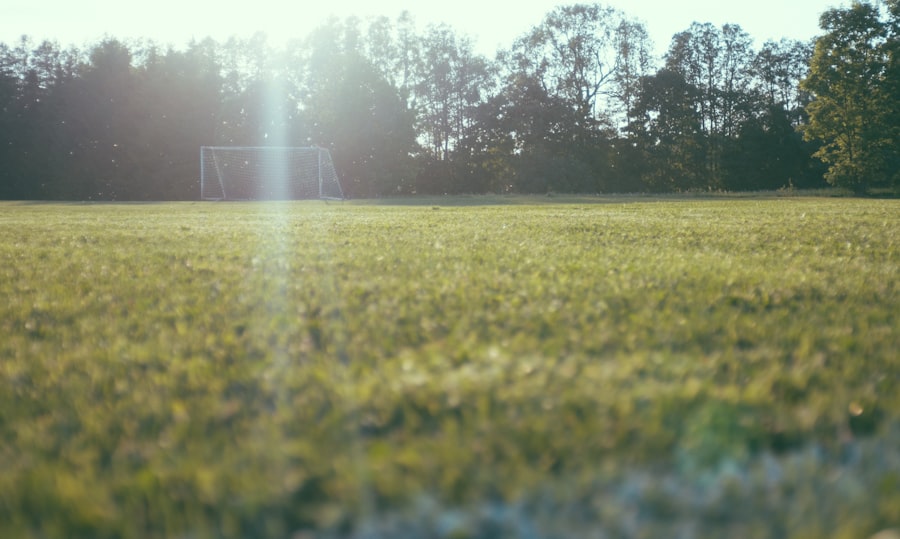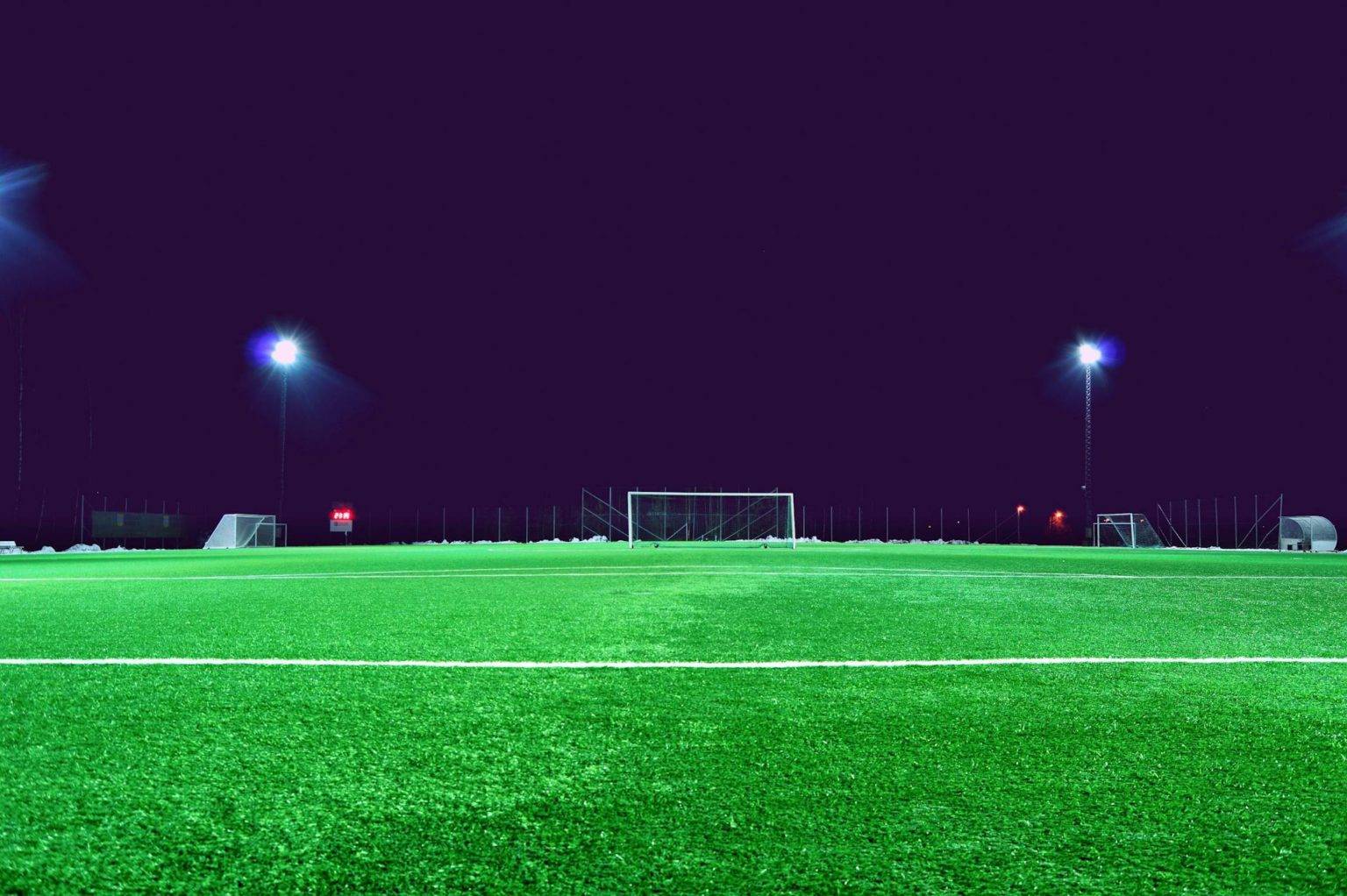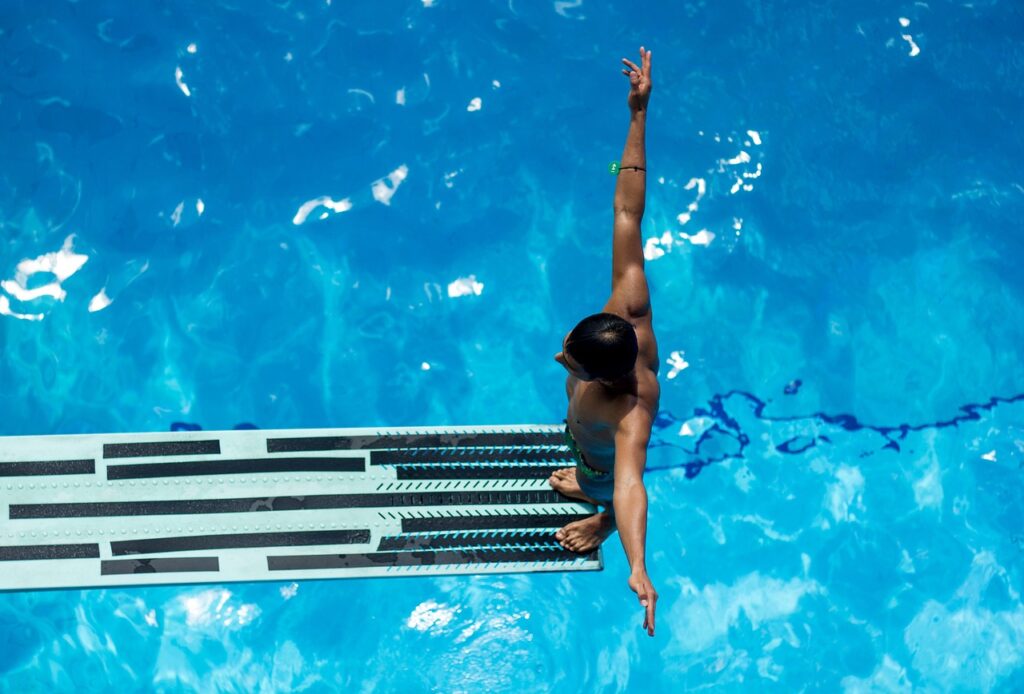Football, also known as soccer, is one of the most popular sports in the world. It is a game that brings people together, ignites passion, and showcases the skills and talents of players from all walks of life. At the heart of this beautiful game lies the football pitch. The pitch is not just a piece of land where the game is played; it is the foundation upon which the game is built.
A football pitch provides a space for players to showcase their skills and compete against each other. It is where dreams are made and broken, where heroes are born, and where legends are made. The pitch is a stage where players can express themselves, entertain the fans, and create moments that will be remembered for years to come.
Understanding the different elements of a football pitch is crucial for players, coaches, and fans alike. It allows them to appreciate the game on a deeper level and enhances their overall experience. From the measurements of the pitch to the markings on its surface, each element plays a significant role in shaping the game and its outcome.
The Standard Measurements of a Football Pitch: Length and Width
A standard football pitch is rectangular in shape, with defined measurements for its length and width. The length of the pitch is between 100-130 yards (90-120 meters), while the width is between 50-100 yards (45-90 meters). These measurements are standardized by governing bodies such as FIFA to ensure consistency across different levels of play.
The dimensions of the pitch are crucial in determining how the game is played. A larger pitch allows for more space for players to maneuver and showcase their skills. It also promotes a more open style of play, with more opportunities for attacking and creative football. On the other hand, a smaller pitch can lead to a more compact and physical game, with less room for players to operate.
The Ideal Football Pitch Size for Different Levels of Play
While there are standard measurements for a football pitch, the size can vary depending on the level of play. Professional matches, such as those played in top-tier leagues and international competitions, require a larger pitch than amateur matches. This is to accommodate the higher level of skill and athleticism displayed by professional players.
The pitch size can also be affected by the location and climate of the area. In countries with limited space or extreme weather conditions, the dimensions of the pitch may be adjusted to fit the available space or to ensure optimal playing conditions. For example, pitches in colder climates may be smaller to reduce the amount of ground that needs to be maintained and heated.
The Different Types of Football Pitches: Natural and Artificial Turf
| Type of Pitch | Advantages | Disadvantages |
|---|---|---|
| Natural Turf | Provides a more authentic playing experience, better shock absorption, and is more environmentally friendly. | Requires more maintenance, can be affected by weather conditions, and may not be as durable as artificial turf. |
| Artificial Turf | Requires less maintenance, is more durable, and can be used in all weather conditions. | Can cause more injuries due to its harder surface, can become hot in warm weather, and is not as environmentally friendly. |
Traditionally, football pitches were made of natural turf. Natural turf provides a soft and natural playing surface, allowing for good ball control and a more authentic playing experience. However, natural turf requires regular maintenance, including watering, mowing, and reseeding, to keep it in optimal condition.
In recent years, artificial turf has become more popular for football pitches. Artificial turf is made of synthetic fibers that mimic the look and feel of natural grass. It offers several advantages over natural turf, including durability, low maintenance requirements, and the ability to withstand heavy use. Artificial turf also provides a consistent playing surface regardless of weather conditions.
Both types of pitches have their advantages and disadvantages. Natural turf offers a more authentic playing experience but requires more maintenance. Artificial turf is more durable and requires less maintenance but may not provide the same level of ball control as natural turf. The choice between the two depends on factors such as budget, climate, and personal preference.
The Markings on a Football Pitch: Goal Lines, Touch Lines, and Penalty Areas
The markings on a football pitch play a crucial role in defining its boundaries and determining the outcome of the game. The goal lines mark the boundaries of the goal area, while the touch lines mark the boundaries of the pitch. These lines are essential for determining whether a ball is in play or out of play.
The penalty areas are another important marking on a football pitch. These areas are located in front of each goal and are where fouls committed by the defending team can result in a penalty kick. The penalty area is marked by a rectangular shape, with the penalty spot located 12 yards (11 meters) from the goal line.
The markings on a football pitch not only provide structure and organization to the game but also serve as visual cues for players and officials. They help players understand their position on the pitch and guide their movements during the game. For officials, the markings provide a reference point for making decisions and enforcing the rules of the game.
The Center Circle and Center Spot: The Starting Point of Every Game

The center circle is one of the most recognizable markings on a football pitch. It is located at the center of the pitch and is where the game begins and restarts after a goal is scored. The center circle has a radius of 9.15 meters (10 yards) and serves as a starting point for both teams.
Within the center circle is the center spot, which is where the ball is placed for kickoffs and penalty kicks. The center spot is marked by a small circle with a diameter of 9 centimeters (3.5 inches). It is from this spot that the ball is kicked to start or restart the game.
The center circle and center spot are symbolic of the importance of fair play and equal opportunity in football. They represent a neutral starting point for both teams, where they have an equal chance to gain possession of the ball and make their mark on the game.
The Goalposts and Crossbar: The Ultimate Target for Every Team
The goalposts and crossbar are perhaps the most important elements of a football pitch. They are the ultimate target for every team, the place where they strive to put the ball to score a goal. The goalposts are located at each end of the pitch, while the crossbar connects the two posts.
The dimensions of the goalposts and crossbar are standardized by FIFA. The goalposts must be 7.32 meters (8 yards) apart, and the crossbar must be 2.44 meters (8 feet) above the ground. These dimensions ensure consistency across different pitches and competitions.
Scoring a goal is the ultimate objective in football. It is what every team strives for and what every player dreams of. The sight of the ball hitting the back of the net is a moment of pure joy and celebration, both for the players and the fans. The goalposts and crossbar are a constant reminder of this objective, serving as a target that drives players to give their best and create moments of magic on the pitch.
The Corner Arcs and Flagposts: The Significance of Set Pieces
Set pieces, such as corner kicks and free kicks, play an important role in football. They provide teams with an opportunity to create scoring chances and change the course of a game. The corner arcs and flagposts on a football pitch mark the boundaries and starting points for these set pieces.
The corner arcs are located at each corner of the pitch and mark the area where corner kicks are taken. A corner kick is awarded when the defending team is responsible for putting the ball out of play over their own goal line. The attacking team takes the corner kick from within the corner arc, aiming to deliver the ball into a dangerous area in front of the goal.
The flagposts mark the boundaries of the pitch and can be used as a reference point for players during set pieces. They provide visual cues for players to position themselves correctly and make accurate passes or shots. The flagposts also serve as a guide for officials in determining whether the ball has crossed the touch line or goal line.
Set pieces are an integral part of the game of football. They require strategy, skill, and teamwork to execute successfully. The corner arcs and flagposts on a football pitch provide the structure and guidelines for these set pieces, allowing teams to create scoring opportunities and showcase their creativity.
The Role of the Referee in Enforcing the Rules of the Pitch
The referee is a central figure in any football match. They are responsible for enforcing the rules of the pitch, ensuring that the game is played fairly and safely. The referee has the authority to make decisions, issue warnings or penalties, and maintain order on the pitch.
The role of the referee is crucial in maintaining the integrity of the game. They are responsible for interpreting and applying the laws of the game, making decisions on fouls, penalties, and other incidents that occur during play. The referee’s decisions can have a significant impact on the outcome of a match, making their role essential in ensuring fair play.
The referee also plays a vital role in ensuring player safety on the pitch. They have the authority to stop play if they believe a player is injured or at risk of injury. They can also issue warnings or penalties for dangerous play or unsportsmanlike behavior, helping to maintain a safe and respectful environment for all participants.
The Football Pitch as the Heart of the Beautiful Game
In conclusion, the football pitch is more than just a piece of land where a game is played; it is the foundation of the beautiful game. It provides a space for players to showcase their skills, compete against each other, and create moments that will be remembered for years to come.
Understanding the different elements of a football pitch is crucial for players, coaches, and fans alike. It allows them to appreciate the game on a deeper level and enhances their overall experience. From the measurements of the pitch to the markings on its surface, each element plays a significant role in shaping the game and its outcome.
The football pitch is where dreams are made and broken, where heroes are born, and where legends are made. It is a stage where players can express themselves, entertain the fans, and create moments that will be remembered for years to come. The football pitch is truly the heart of the beautiful game.




